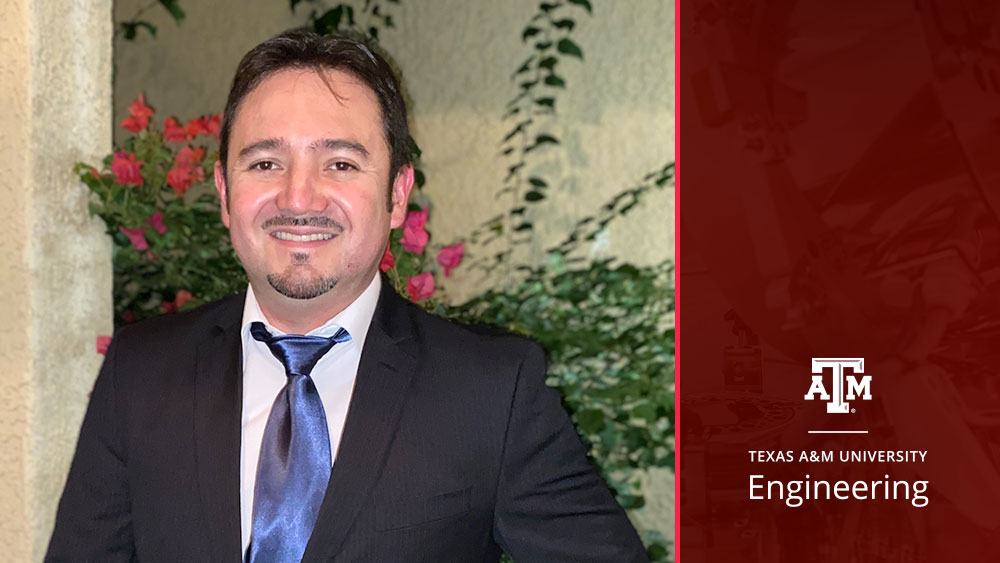
Scientists use tools on the ground and in space to observe the Earth’s processes, uncovering information about the ongoings below and above our planet’s surface. The study of geodesy can inform us about anything from earthquake damage to statewide droughts by measuring the Earth’s properties over time.
“As you observe changes in the gravitational field over time, you can see what’s happening with the mass on Earth, what’s changing, where it’s shifting,” said Dr. Felipe Guzman, associate professor in the Department of Aerospace Engineering at Texas A&M University.
For example, by measuring the gravitational field around the poles, scientists have observed a reduction in mass indicative of melting ice caps. The mass of that water is being redistributed, showing a higher gravitational field across the oceans. Data like these inform experts across scientific fields, influence policy and continue global discussions.
Guzman is working on the future of geodesy by advancing technology that enables these types of critical observations. He is working on three projects with a collaborative research center, Terra-Q, in Hannover, Germany, through a Mercator Fellowship. The respected international fellowship supports long-term, project-based collaboration between researchers and is awarded by the German Research Foundation to researchers who have made meaningful contributions in the field. This is Guzman’s second Mercator Fellowship.
“Now, we know and we understand that our current approach has its limitations and can be improved, and a lot of that starts at improving technology,” said Guzman.
The goal of Terra-Q is to elevate instruments and measurement systems through quantum-based geodesy. The first of three projects Guzman is involved in is developing atom-interferometric gravimeters, which are quantum measurement systems based on cold atoms. By merging his group’s optomechanical systems with atom interferometers developed by a group in Germany, they can create a more effective system to measure gravitational acceleration.
Atom interferometers are highly sensitive to environmental noise and vibrations. Currently, the system in Germany is constrained to a room rather than being used in the field as intended and relies on a large vibration isolation platform.
“Turns out, the mechanical sensors we developed in my group are very sensitive, and they measure those types of vibrations and seismic noise very well,” said Guzman. “We can incorporate these sensors into their atom interferometers so that the size decreases and these atom interferometers become more portable.”
The atom interferometers are also limited to measuring slow phenomena, while Guzman’s optomechanical sensors can measure higher frequencies. Conversely, the optomechanical systems drift away over time, whereas the atom interferometer does not and holds the advantage in long-term observations.
When we put the two together in the right way, we can get the best of both worlds.
The second project focuses on developing compact laser interferometers to measure the motion of mechanical systems with extremely high precision. Guzman plans to help the research team in Germany set up a system like the one in his research lab at Texas A&M, which allowed his group to measure their optomechanical sensors. In turn, the research team in Germany will help Guzman improve the measurement capabilities for interferometers.
“It’ll be a really close interaction, and that’s sort of the vision of this type of fellowship, to have a very close interaction and do things together,” said Guzman.
The third project involves developing a torsion balance, which is a large, sensitive system that can be used to measure small accelerations and small forces allowing researchers to isolate inertial phenomena.
“Because our little optomechanical accelerometers are so sensitive, it’s hard to characterize how good they are because they measure everything,” he explained. “We want to mount our accelerometers and use it as a test platform to isolate them from environmental noise.”
Overall, the goal is to enhance and create technologies that tap into areas of physics that scientists are not currently using to enable new types of measurements. For Guzman personally, it’s also an opportunity to expand the horizons and applicability of his research.
“To me, it’s an opportunity to extend the impact of the research we do, and it gives me an opportunity to work on projects that I’m interested in with people that I know and work well with, so that just makes it more fun,” he said.
Upon receiving his doctorate from the Max Planck Institute for Gravitational Physics in Hannover, Germany, Guzman was awarded a NASA Postdoctoral Program fellowship with the Gravitational Astrophysics Laboratory at the NASA Goddard Space Flight Center. Later, he joined the Joint Quantum Institute with the National Institute of Standards and Technology and the University of Maryland. He also led a research group at the German Space Agency in collaboration with the University of Bremen before moving on to a faculty position at the University of Arizona. He is also principal investigator for the Texas A&M groups with the LIGO Scientific Collaboration (Laser Interferometer Gravitational-Wave Observatory) and the LISA Consortium (Laser Interferometer Space Antenna) groups. These institutions, among others, are all involved in the Terra-Q.
“These are people that I have known and worked with for over 15 years, and it’s great to find ways to continue those relationships and also now to involve my students and offer them the experience to really get to know other institutions, how people work in other places and get them involved in these types of big projects,” said Guzman.
He is hopeful this collaborative effort will expand the impact of his group’s research and is equally looking forward to what this experience could mean for his students.